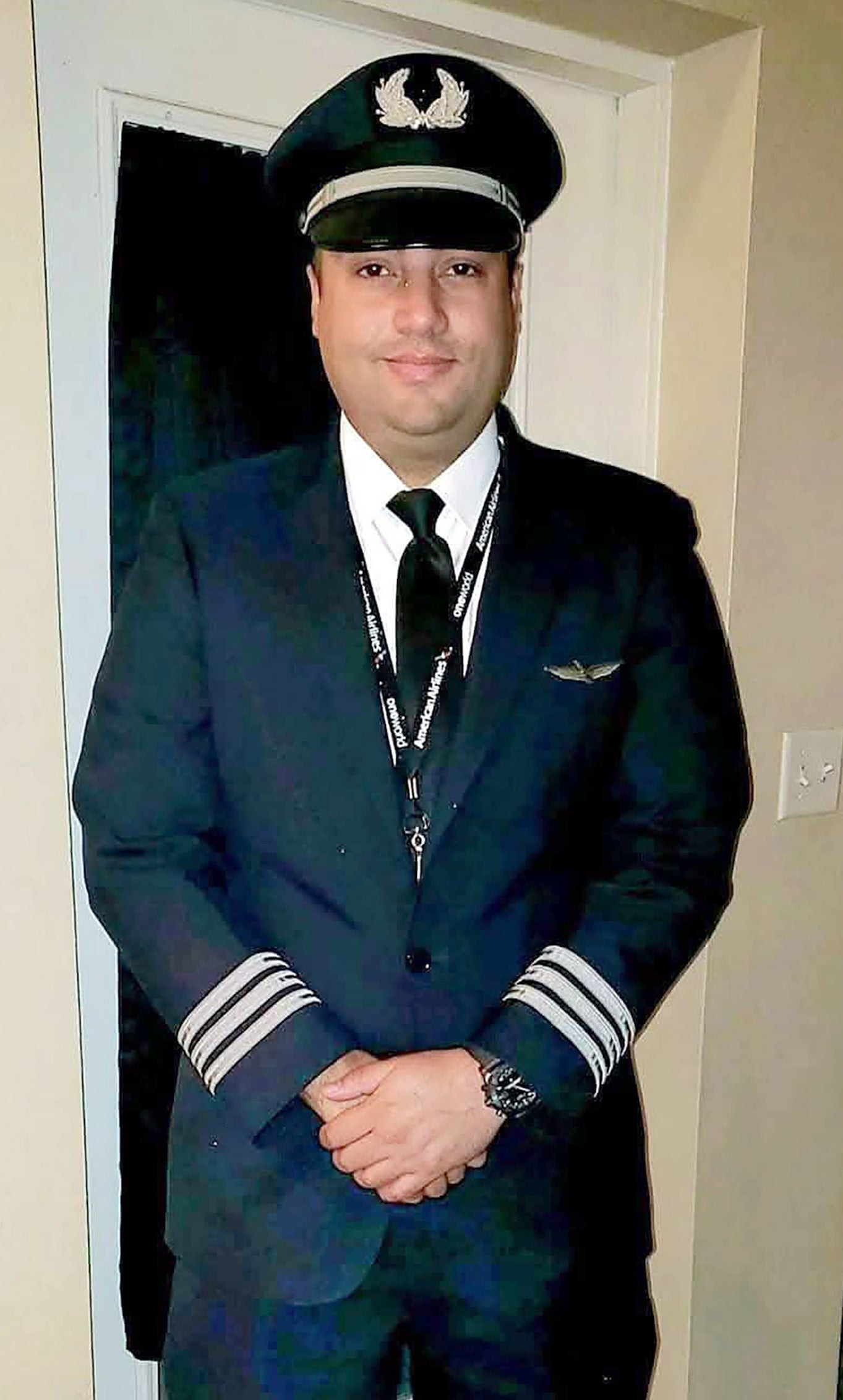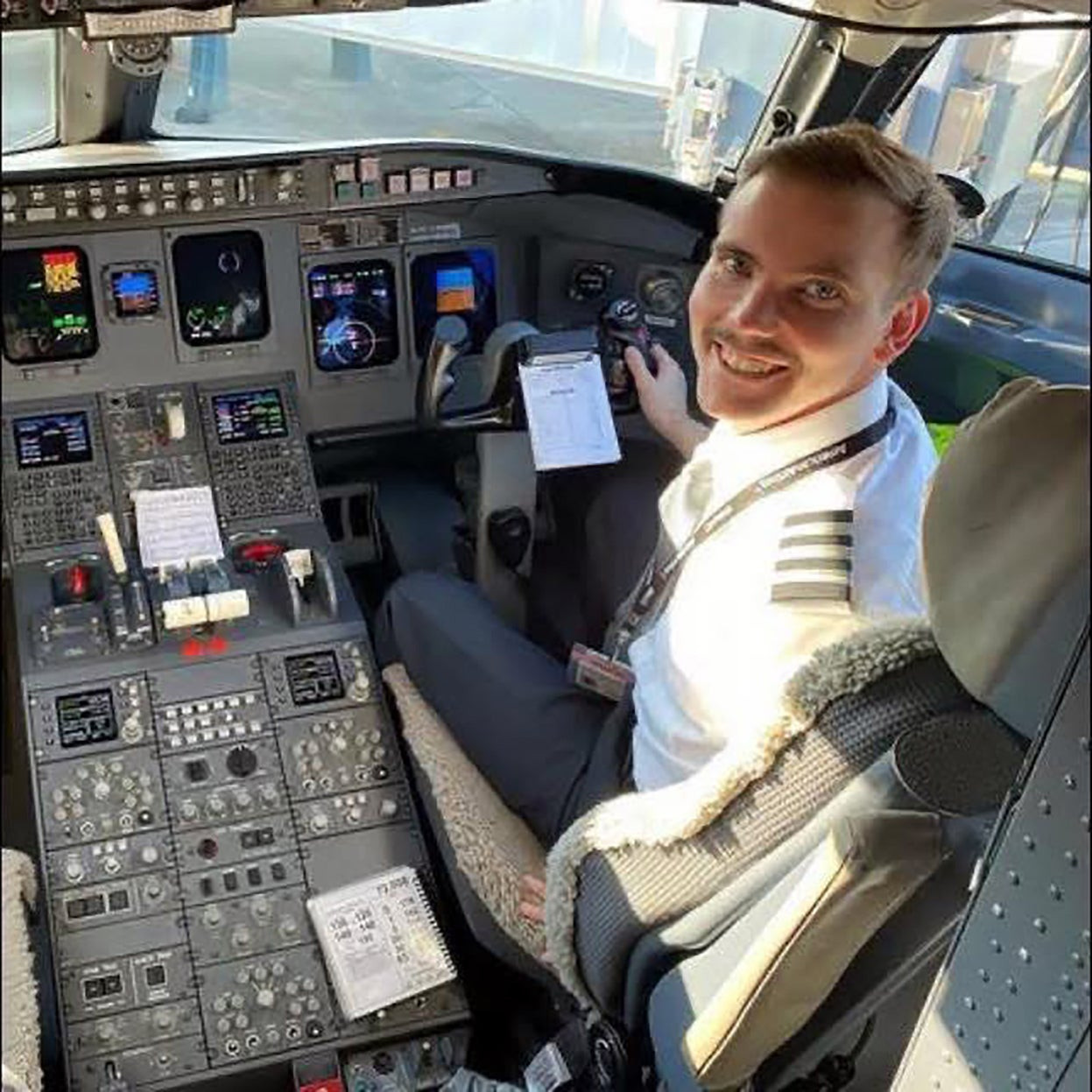Who Was Flying The Blackhawk That Crashed? The tragic Blackhawk crash involved a U.S. Army helicopter and an American Airlines jet, a devastating incident, and at flyermedia.net, we aim to provide accurate information and resources to help you understand aviation incidents. This article will delve into the details of those on board and explore related aviation safety topics, flight training, and career opportunities. Let’s explore the circumstances surrounding this event with factual reporting, safety analysis, and available resources.
1. The Tragic Collision: Blackhawk and American Airlines Jet
The devastating collision between an American Airlines jet and a U.S. Army Blackhawk helicopter near Ronald Reagan National Airport resulted in the loss of 67 lives and cast a shadow over the aviation community. Authorities worked diligently to recover bodies from the Potomac River and identify the victims. This tragic incident underscores the critical importance of safety measures and training in both commercial and military aviation.
2. American Airlines Crew: Captain Jonathan Campos and First Officer Sam Lilley
2.1. Captain Jonathan Campos: A Passion for Flying
 American Airlines Captain Jonathan Campos
American Airlines Captain Jonathan Campos
Captain Jonathan Campos (Facebook)
Captain Jonathan Campos, 34, had a lifelong passion for aviation. Born in New York and raised in Florida, he graduated from Embry‑Riddle Aeronautical University, earning his certified flight instructor certification in 2017 and becoming a commercial airline pilot in 2018, according to company records obtained by Mail Online. His uncle, Hector Campos, recalled his nephew’s dedication to his profession: “He loved it.” The loss deeply affected his alma mater, which released a statement expressing condolences to his family and all those impacted by the accident.
2.2. First Officer Sam Lilley: Following His Father’s Footsteps
 Sam Lilley was an American Airlines first officer
Sam Lilley was an American Airlines first officer
Sam Lilley was an American Airlines first officer (Facebook)
First Officer Sam Lilley, 28, from Richmond Hill, Georgia, was remembered as a “fun, adventurous son and brother.” According to his sister, Tiffany Gibson, in an interview with The Charlotte Observer, Lilley had visited her in Goldsboro, North Carolina, with his fiancee shortly before the crash. Lilley followed in his father’s footsteps by pursuing a career as a pilot, after initially working in marketing. “He loved traveling and he loved flying,” his sister shared.
3. U.S. Army Blackhawk Crew: Capt. Rebecca M. Lobach, Andrew Eaves, and Ryan O’Hara
3.1. Capt. Rebecca M. Lobach: A Dedicated Aviation Officer
 Capt. Rebecca M. Lobach was the third pilot killed in the crash
Capt. Rebecca M. Lobach was the third pilot killed in the crash
Capt. Rebecca M. Lobach was the third pilot killed in the crash (US Army)
Captain Rebecca M. Lobach, 28, was among the crew members killed in the Blackhawk helicopter crash during a training mission near Ronald Reagan National Airport. She served as an aviation officer from July 2019 to January 2025, assigned to the 12th Aviation Battalion, Ft Belvoir. Her family’s statement described her as a “distinguished military graduate in ROTC at the University of North Carolina, and was in the top 20% of cadets nationwide.” During her career, Lobach served as a White House Military Social Aide, even escorting fashion icon Ralph Lauren when he received the Presidential Medal of Freedom from President Joe Biden in 2024.
3.2. Instructor Pilot Andrew Eaves: A Light in Dark Days
 Chief warrant officer Andrew Eaves
Chief warrant officer Andrew Eaves
Chief warrant officer Andrew Eaves (Facebook)
Instructor Pilot Andrew Eaves was a chief warrant officer in the U.S. Army, hailing from Noxubee County, Mississippi. He graduated from Central Academy, Brooksville, as reported by The Macon Beacon. His wife, Carrie Eaves, confirmed his death in a Facebook post. His niece, Kaitlyn Lawrence, remembered him as a man who was “truly a light in a lot of our dark days,” adding, “Wings of freedom has a whole new meaning now. We love you.”
3.3. Crew Chief Ryan O’Hara: A Vital Member of the Team
-copy.jpeg)
Ryan O’Hara was also on board on the helicopter (Facebook)
Ryan O’Hara served as the crew chief on board the Black Hawk, responsible for the maintenance of the aircraft. He previously attended Parkview Marine Corps JROTC at Parkview High School, Lilburn, where he was known as a dedicated gym member and “a vital member of the rifle team,” according to WTVY. David Erwin, his former Marine Corps JROTC instructor, described O’Hara as a “quiet kid” who thrived at Parkview. O’Hara joined the U.S. Army after graduating, serving a tour in Afghanistan.
4. Understanding Aviation Safety: Key Factors and Regulations
Aviation safety encompasses a wide array of factors, including pilot training, aircraft maintenance, air traffic control, and adherence to strict regulations. The Federal Aviation Administration (FAA) oversees and enforces these regulations in the United States to ensure the highest levels of safety.
4.1. The Role of the FAA
The FAA is responsible for regulating all aspects of civil aviation in the U.S. This includes setting standards for aircraft design and maintenance, licensing pilots and other aviation personnel, and managing air traffic control systems. The FAA also investigates aviation accidents and incidents to identify causes and implement preventive measures. According to FAA data, continuous improvements in technology, training, and regulatory oversight have significantly reduced the accident rate in aviation over the past few decades.
4.2. Importance of Pilot Training
Pilot training is a critical component of aviation safety. Comprehensive training programs equip pilots with the knowledge, skills, and judgment necessary to handle a wide range of situations, including emergencies. Training includes classroom instruction, simulator sessions, and flight training under the supervision of experienced instructors.
Embry-Riddle Aeronautical University, a leading institution in aviation education, emphasizes the importance of continuous training and professional development for pilots. Research from Embry-Riddle indicates that pilots who engage in regular training and proficiency checks are better prepared to respond effectively to unexpected events.
4.3. Aircraft Maintenance: Ensuring Airworthiness
Proper aircraft maintenance is essential for ensuring the airworthiness of aircraft. Regular inspections, maintenance checks, and repairs are necessary to identify and address potential issues before they become safety hazards. Maintenance personnel must be highly trained and certified to perform these tasks. The FAA mandates strict maintenance schedules and procedures for all aircraft operating in the U.S.
4.4. Air Traffic Control: Managing the Skies
Air traffic control (ATC) plays a vital role in preventing collisions and maintaining the safe and orderly flow of air traffic. Air traffic controllers use radar and other technologies to monitor aircraft movements and provide guidance to pilots. They also coordinate with pilots to manage traffic flow and avoid potential conflicts.
5. Exploring Aviation Careers: Opportunities and Paths
The aviation industry offers a wide range of career opportunities, from pilots and air traffic controllers to maintenance technicians and engineers. These careers require specialized training and education, but they can be highly rewarding for those passionate about aviation.
5.1. Becoming a Pilot: Steps to Take
Becoming a pilot involves several steps, including obtaining a pilot’s license, completing flight training, and meeting medical and age requirements. There are different types of pilot licenses, including private pilot, commercial pilot, and airline transport pilot, each with its own set of requirements.
- Research and Choose a Flight School: Look for FAA-approved flight schools that offer the type of training you’re interested in.
- Obtain a Medical Certificate: You’ll need to pass a medical exam administered by an FAA-approved Aviation Medical Examiner (AME).
- Start Flight Training: Begin with ground school to learn aviation theory, followed by practical flight training with a certified flight instructor (CFI).
- Pass the FAA Knowledge Exam: This is a written test covering aviation regulations, meteorology, navigation, and other essential topics.
- Accumulate Flight Hours: The number of hours required varies depending on the type of license you’re pursuing.
- Pass the Practical (Checkride) Exam: This involves demonstrating your flying skills and knowledge to an FAA examiner.
5.2. Air Traffic Controller: Ensuring Safe Skies
Air traffic controllers play a critical role in ensuring the safety and efficiency of air travel. They work in air traffic control centers and airport towers, using radar and communication systems to manage the movement of aircraft. The FAA offers training programs for aspiring air traffic controllers. According to the Bureau of Labor Statistics, the median annual wage for air traffic controllers was $138,550 in May 2023.
5.3. Aviation Maintenance Technician: Keeping Aircraft Airworthy
Aviation maintenance technicians (AMTs) are responsible for inspecting, maintaining, and repairing aircraft. They work on a wide range of systems, including engines, airframes, and avionics. AMTs must complete training programs approved by the FAA and obtain an AMT certificate.
5.4. Aerospace Engineer: Designing the Future of Flight
Aerospace engineers design, develop, and test aircraft and spacecraft. They work on projects ranging from commercial airliners to military jets and space exploration vehicles. A bachelor’s degree in aerospace engineering is typically required for entry-level positions. The Bureau of Labor Statistics reports that the median annual wage for aerospace engineers was $126,830 in May 2023.
6. Resources for Aviation Enthusiasts and Professionals: Stay Informed
Staying informed about the latest news, regulations, and technologies in aviation is crucial for both aviation enthusiasts and professionals. Several resources can help you stay up-to-date.
6.1. Aviation News Websites and Publications
- Aviation Week & Space Technology: Offers in-depth coverage of the aerospace and defense industries.
- FlightGlobal: Provides news, analysis, and data on the aviation industry.
- General Aviation News: Focuses on news and information for general aviation pilots and enthusiasts.
6.2. FAA Resources and Publications
The FAA provides a wealth of information on aviation safety, regulations, and training. Their website includes publications, advisory circulars, and safety alerts.
- FAA Website: www.faa.gov
- FAA Safety Briefing: A bi-monthly magazine covering aviation safety topics.
6.3. Aviation Associations and Organizations
- Aircraft Owners and Pilots Association (AOPA): Advocates for general aviation and provides resources for pilots.
- National Business Aviation Association (NBAA): Represents the interests of business aviation operators.
- Experimental Aircraft Association (EAA): Supports recreational aviation and homebuilding.
7. Advancements in Aviation Technology: Shaping the Future
Aviation technology is constantly evolving, with new innovations aimed at improving safety, efficiency, and performance. These advancements include improved navigation systems, advanced materials, and more efficient engines.
7.1. GPS and Navigation Systems
Global Positioning System (GPS) technology has revolutionized navigation in aviation. GPS-based navigation systems provide pilots with precise location information, allowing for more accurate and efficient flight planning and execution.
7.2. Advanced Materials
The use of advanced materials, such as composites and alloys, has led to lighter and stronger aircraft structures. These materials improve fuel efficiency and enhance aircraft performance.
7.3. Fuel-Efficient Engines
New engine technologies are focused on reducing fuel consumption and emissions. These engines use advanced designs and materials to improve efficiency and reduce their environmental impact.
8. Commemorating the Victims: Remembering Those We Lost
The loss of life in the Blackhawk crash and the American Airlines jet collision is a stark reminder of the risks involved in aviation. It is essential to remember the victims and honor their contributions to the aviation community.
8.1. Memorial Services and Tributes
Memorial services and tributes provide an opportunity for family, friends, and colleagues to honor the lives of those lost in the accident. These events offer a chance to share memories and express condolences.
8.2. Supporting Families of the Victims
Providing support to the families of the victims is crucial in the aftermath of the tragedy. This support can include financial assistance, counseling, and other forms of emotional support.
8.3. Continuing Their Legacy
Continuing the legacy of those lost in the accident involves honoring their contributions to aviation and working to improve safety and prevent future tragedies. This can include supporting aviation education, promoting safety initiatives, and advocating for improved regulations.
9. Flight Training and Aviation Programs: Shaping Future Aviators
Flight training and aviation programs play a pivotal role in shaping the next generation of aviators. These programs provide aspiring pilots and aviation professionals with the knowledge, skills, and experience necessary to succeed in the industry.
9.1. Types of Flight Training Programs
- Private Pilot License (PPL): Allows individuals to fly for personal or recreational purposes.
- Commercial Pilot License (CPL): Enables individuals to fly for hire or compensation.
- Airline Transport Pilot (ATP): Required for pilots to fly as captain of a commercial airliner.
9.2. Aviation Degree Programs
- Aeronautical Science: Focuses on the technical aspects of aviation, including aerodynamics, propulsion, and aircraft systems.
- Aviation Management: Prepares students for careers in aviation administration, airport management, and airline operations.
- Aerospace Engineering: Equips students with the knowledge and skills to design and develop aircraft and spacecraft.
9.3. Choosing the Right Program
Selecting the right flight training or aviation program depends on your career goals and interests. Consider factors such as the program’s accreditation, curriculum, faculty, and facilities.
10. Safety Recommendations and Preventative Measures: Learning from the Past
Learning from past aviation accidents is essential for improving safety and preventing future tragedies. Implementing safety recommendations and preventative measures can help reduce the risk of accidents and save lives.
10.1. Implementing Safety Recommendations
Following safety recommendations issued by the National Transportation Safety Board (NTSB) and other aviation organizations can help prevent accidents. These recommendations are based on thorough investigations of past accidents and incidents.
10.2. Preventative Maintenance
Regular preventative maintenance is crucial for ensuring the airworthiness of aircraft. This includes performing inspections, replacing worn parts, and addressing potential issues before they become safety hazards.
10.3. Enhanced Training and Procedures
Enhanced training and procedures can help pilots and other aviation personnel better prepare for emergencies and unexpected events. This includes simulator training, emergency procedures training, and crew resource management training.
FAQ: Common Questions About Blackhawk Helicopter Crashes
1. What are the primary causes of helicopter crashes?
Helicopter crashes can result from a variety of factors, including mechanical failure, pilot error, adverse weather conditions, and inadequate maintenance. According to the FAA, the most common causes involve a combination of these elements.
2. What safety regulations are in place for military helicopters?
Military helicopters adhere to stringent safety regulations and maintenance protocols set by the Department of Defense. These regulations include regular inspections, pilot training programs, and strict operational guidelines.
3. How does weather impact helicopter safety?
Adverse weather conditions, such as fog, icing, and strong winds, can significantly impair helicopter operations. Pilots must be trained to handle these conditions, and helicopters are equipped with instruments to aid in navigation and stability.
4. What role does maintenance play in preventing helicopter accidents?
Proper maintenance is crucial for ensuring the airworthiness of helicopters. Regular inspections and timely repairs can identify and address potential mechanical issues before they lead to accidents.
5. How are helicopter pilots trained for emergency situations?
Helicopter pilots undergo extensive training for emergency situations, including engine failures, hydraulic system malfunctions, and sudden changes in weather conditions. This training often involves flight simulators and real-world scenarios.
6. What are the key differences between civilian and military helicopter operations?
Civilian helicopter operations typically involve transport, tourism, and law enforcement, while military operations include combat, search and rescue, and reconnaissance. Each has specific training and safety protocols.
7. What technological advancements have improved helicopter safety?
Advancements such as GPS navigation, enhanced communication systems, and advanced sensors have significantly improved helicopter safety. These technologies help pilots navigate better and respond more effectively in emergencies.
8. How do investigators determine the cause of a helicopter crash?
Investigators examine various factors, including wreckage analysis, flight data recorders, witness statements, and weather conditions. This thorough investigation helps determine the primary cause of the accident.
9. What are the common challenges in helicopter flight training?
Common challenges include mastering complex flight controls, adapting to different weather conditions, and managing stress during emergency simulations. Instructors provide detailed guidance and support to overcome these challenges.
10. How can I learn more about helicopter safety and aviation careers?
You can find more information on websites like flyermedia.net, which offers resources on aviation safety, flight training, and career opportunities. Additionally, organizations like the FAA and AOPA provide valuable information and support.
Conclusion: Honoring the Fallen and Promoting Aviation Safety
The tragic collision between the American Airlines jet and the U.S. Army Blackhawk helicopter is a somber reminder of the risks inherent in aviation. By remembering the victims, understanding the factors that contribute to aviation safety, and promoting continuous improvement, we can honor their memory and work toward a safer future for all those who fly. Stay informed, stay vigilant, and let’s continue to make the skies safer for everyone. At flyermedia.net, we’re committed to providing you with the latest information and resources to navigate the world of aviation safely and confidently.
Are you looking for comprehensive information on flight training, the latest aviation news, and exciting career opportunities in the USA? Visit flyermedia.net today to explore our resources and take the first step towards achieving your aviation dreams. You can also reach us at Address: 600 S Clyde Morris Blvd, Daytona Beach, FL 32114, United States or Phone: +1 (386) 226-6000.
